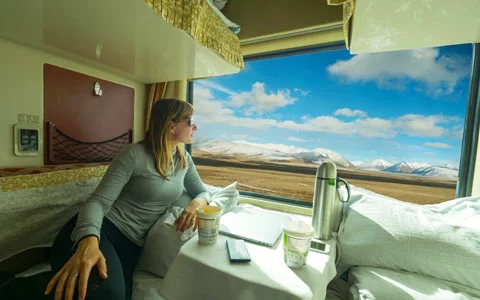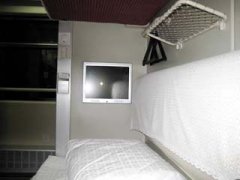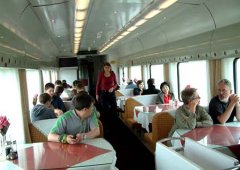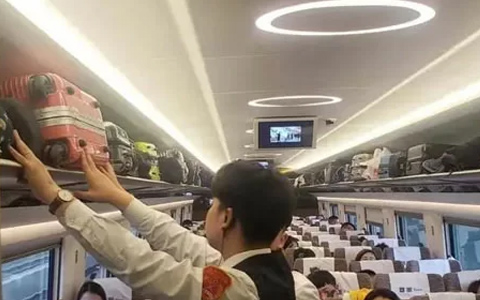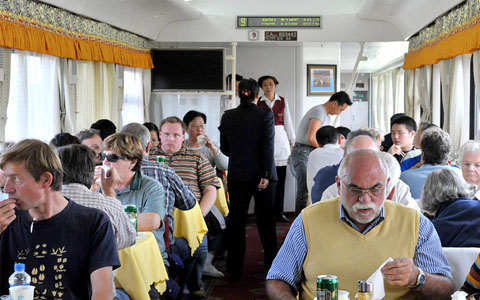How to Board and Get off Tibet Train: when to show your Tibet permit, how to collect train ticket...
One of the most popular ways to get to Tibet is taking a Tibet train along the Qinghai-Tibet railway. During the one to two days train journey from mainland China to Lhasa city, you will experience the amazing landscape on the Qinghai-Tibet Plateau. To start your lifetime Tibet train tour, how to board the train is an important thing to know before you go. Here is the useful guide about how to board and get off the train to Tibet. Just following the simple steps below, you can easily start your train journey to your dreamy destination.
Simple Steps to Board the Train to Tibet
Step 1: Prepare You Travel Document
Tibet Travel Permit
Tibet Travel Permit is an important travel document for international travelers entering Tibet, which means no matter you enter Tibet by flight or by train, you need to show this Tibet permit so that you can board the plane or Tibet train. When you board the Tibet train, you will need to show your copied or original Tibet permit to the security staff when you go through the security check. If you take the train to Tibet from Chongqing, Xian and Lanzhou, you need to get the original one before you go. For entering Tibet from other cities by train, you can just show the copy of the travel permit at the railway station.
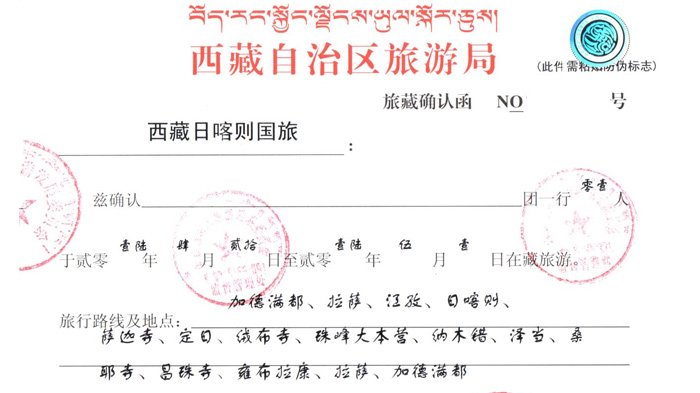 Tibet Travel Permit
Tibet Travel Permit
You can only apply for the travel permit through a Tibet local travel agency, like us, which will offer the full Tibet tour service for you. If you book your Tibet tour with us, we will help you get Tibet Travel Permit for free from Tibet Tourism Bureau and later send it to your hotel or residence in mainland China.
Passport
Remember to bring your passport with you. Since you need to book the train ticket with your passport number, please double check the number of your passport is the same as the one you used to book the ticket, or you can’t collect your Tibet train ticket.
Step 2: Collect Your Train Ticket
There are two ways to collect your Tibet train ticket. In the first case, our local staff will send the train tickets to your hotels or address in mainland China; in the second case, you need to collect your train ticket at the railway station by yourself. You have to go to the ticket window and show the train booking confirmation No., your passport and Tibet travel permit to get your ticket.
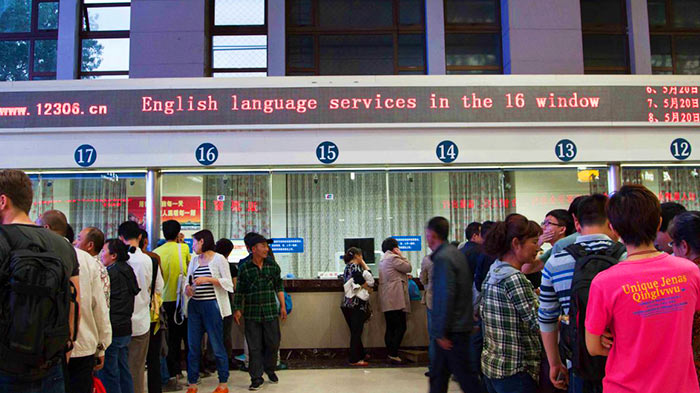 Collecting your train ticket at the railway station by yourself
Collecting your train ticket at the railway station by yourself
Since the Chinese railway stations are always crowded, especially in those big cities like Beijing, Shanghai and Guangzhou, Chengdu, etc. it is suggested to arrive at the station at least two hours in advance. You may need to spend a lot of time finding the right ticket window and queuing in lines to collect your ticket. Please leave enough time and be patient.
Step 3: Go through the Security Check
Once you get your Tibet train ticket at the railway station, you need to pass through a security check at the entrance. You passport, train ticket and Tibet travel permit are required to be checked. The luggage and passenger security check at the train station is just like the one at the airport.
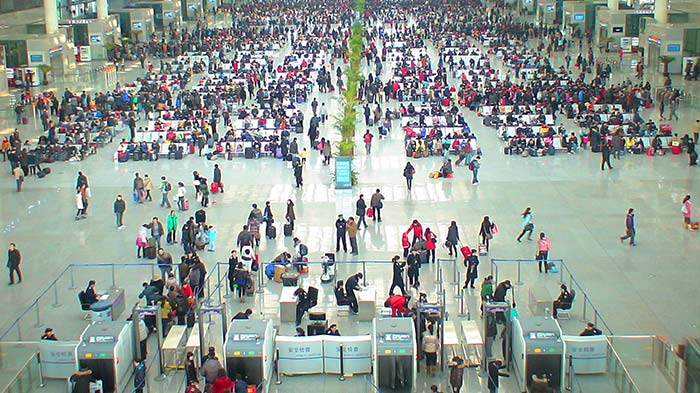 Pass through the security check at the entrance
Pass through the security check at the entrance
Step 4: Find Right Waiting Room
After passing the security check, you will enter the waiting hall. Generally, there are many waiting rooms at each station. You need to find the right waiting room for your train to Tibet. Generally, the information, such as the train number, waiting room numbers, and departure time, is shown on the LED screen at the railway station in Chinese. If you cannot read Chinese, you can find the train number first, and then you can see the number of the waiting room at the same line.
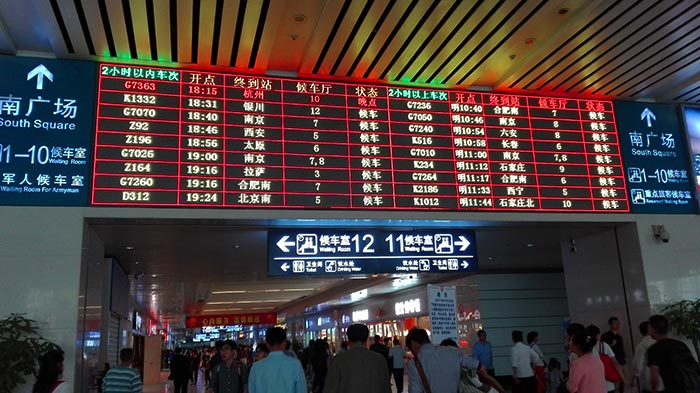 Checking the train number to find right waiting room
Checking the train number to find right waiting room
Step 5: Line up for Checking in
Sometimes one waiting room is for several platforms. So you need to check which gate and platform are right for you. You need to take your train ticket to get to the right platform and check-in 15 minutes before departure.
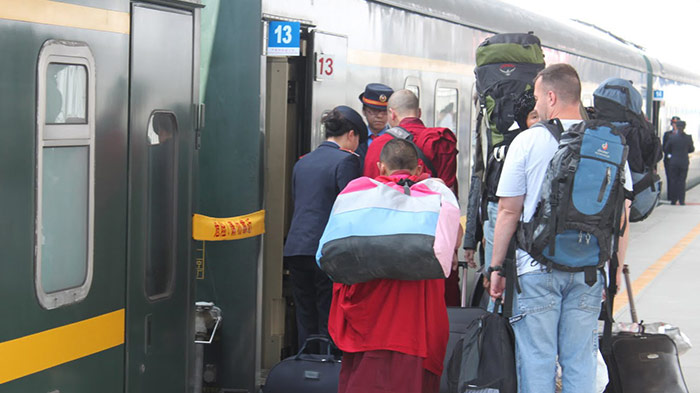 Find right gate and platform
Find right gate and platform
Step 6: Board the Train and Find Your Seat
Once you board the train, you need to find the right cabin. The car number is shown on your train ticket. Next, after getting to the right car, you can see the cabin number and bunk number displayed on the wall. In the soft sleeper cabin, there are 4 sleeping bunks in each compartment and the door can be closed for the private compartment. Usually, there are only two soft sleeper cars on each train to Tibet. If you prefer the soft sleeper cars, it's better to book a Tibet train ticket in advance, I mean, at least 1 month earlier.
We have the detailed information about what the soft sleeper cars look like on trains to Tibet here.
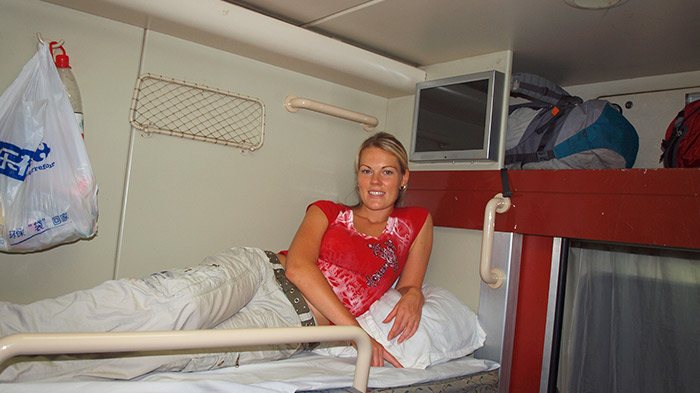 See the cabin number and bunk number displayed on the wall to find your cabin
See the cabin number and bunk number displayed on the wall to find your cabin
Usually, there are around 10 hard sleeper cars onboard. In each hard sleeper car, there are 11 compartments and each one has 6 bunks. There is no door for each compartment in hard sleeper cars, and you can check the detailed introduction about hard sleeper cars on trains to Tibet here. And the number of bunks is also displayed on the wall. If you cannot find your bunk, ask the onboard staff for help.
How to Get off the Train and Exit
After enjoying a lifetime journey through the world highest Qinghai Tibet railway, you will arrive in Lhasa, the holy city on the Tibet plateau. Upon arrival, you need to pick up your luggage and get off the train yourself. Our travel guide will meet you outside Lhasa railway station. Please get out of the train station immediately to find the guide instead of waiting at the platform inside the station. Please wait for your driver and tour guide in the marked area to pick you up to your hotels. Do not hang out on the square.
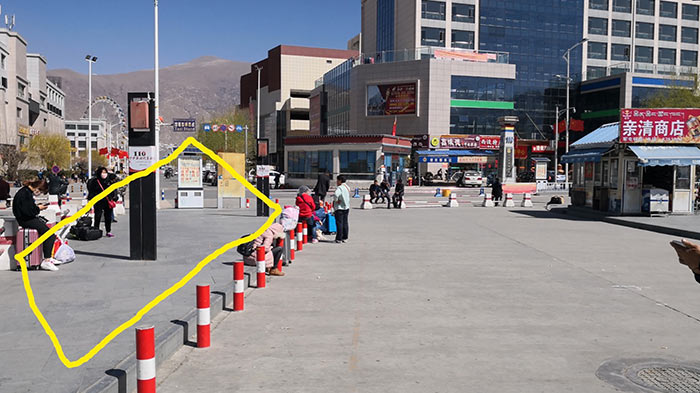 Upon your arrival, please wait for your tour guide in the marked area
Upon your arrival, please wait for your tour guide in the marked area
Other Tips for the Journey aboard the Tibet Train
Now, you know how to board and get off the train to Tibet. There are still some things you need to know about the life aboard the train.
1. There is one dining car in each Tibet train, where you can have three meals a day and buy some snacks and drinks onboard. The food provided in the dining car is only Chinese cuisine. If you are not used to Chinese food, you can bring some packaged snacks and instant noodles with you. There is 24-hour boiled water supplied for free.
2. If you want much privacy on the Tibet train, you can book the soft sleeper bunk, for there are only 4 people in one compartment and the door can be closed for a private room. But the price of the soft sleeper cabin is much expensive than a hard sleeper. And since there are only about 64 soft bunks on each Tibet train, it is quite hard to book one soft sleeper ticket in peak season. So it is suggested to make your reservation as soon as possible.
3. There are both Western-Style toilets and Chinese-style toilets at the end of each train car. There is no private bathroom in the soft sleeper cabin. You cannot take a shower during your Tibet train journey.
4. As driving through the Qinghai-Tibet railway, the highest railway in the world at an average altitude of 4500 metres above the sea level, you may worry about getting the high altitude sickness onboard. In fact, the trains to Tibet are specially-designed for the journey on the plateau. There are two oxygen supply systems equipped aboard. It is easy to find a private oxygen supplies on the wall of the carriage. After passing through Golmud station, the other oxygen supply system starts to work to spread oxygen into the train cars.
Please note: smoking is forbidden on trains to Tibet when the oxygen supply system are working during the section from Golmud to Lhasa.

The Lhasa-born prodigy used to study business overseas, and got his Bachelor of Business in Nepal and India before moving back to his homeland. With pure passion for life and unlimited love for Tibet, Kunga started his guide career as early as 1997.
Responsible, considerate, and humorous, he devoted his entire life to guiding and serving international tourists traveling in Tibet. As a legendary Tibetan travel guru with 20-year pro guide experience. Currently, he is working in Tibet Vista as the Tour Operating Director. Whenever our clients run into trouble, he is your first call and will offer prompt support.
Most Popular Tibet Tour Packages
-
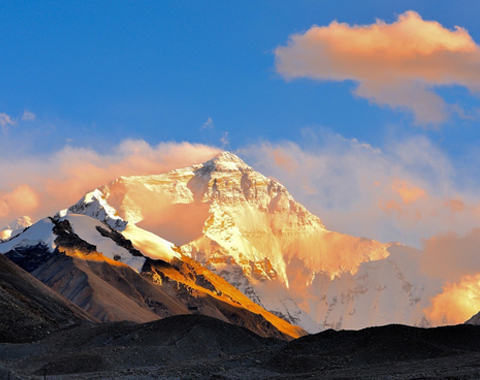
Lhasa - Gyantse - Shigatse - Everest Base Camp - Shigatse - Lhasa
USD939
View Details -
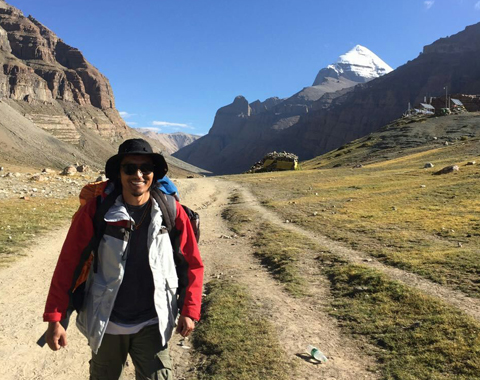
Lhasa - Gyantse - Shigatse - E.B.C - Saga - Kailash Trek - Darchen - Lake Manasarovar - Saga - Gyirong - Tingri - Lhasa
USD2059
View Details -
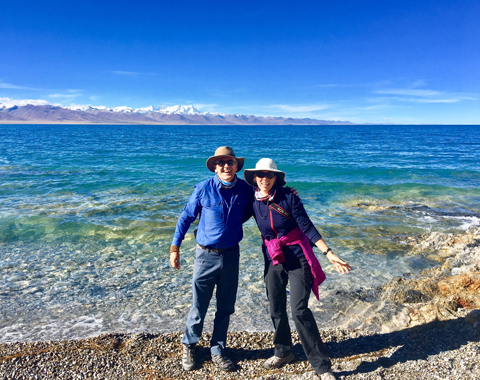
10 Days Lhasa to Everest Base Camp and Namtso Lake Small Group Tour
Lhasa - Gyantse - Shigatse - EBC - Shigatse - Lhasa - Namtso Lake - Damxung - Lhasa
USD1289
View Details -
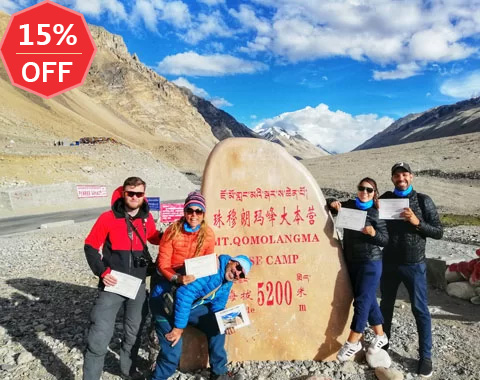
8 Days Driving Across Himalaya Overland Adventure from Kathmandu to Lhasa
Kathmandu - Gyirong - Everest Base Camp - Tingri - Shigatse - Gyantse - Lhasa
USD1069
View Details -
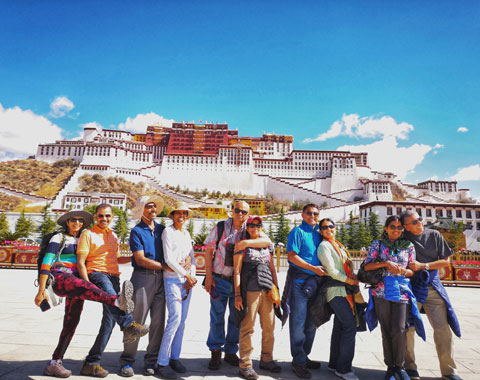
4 Days Lhasa Impression Small Group Tour: Explore the Heart of Tibet and Mingle with the Locals
Lhasa
USD509
View Details -
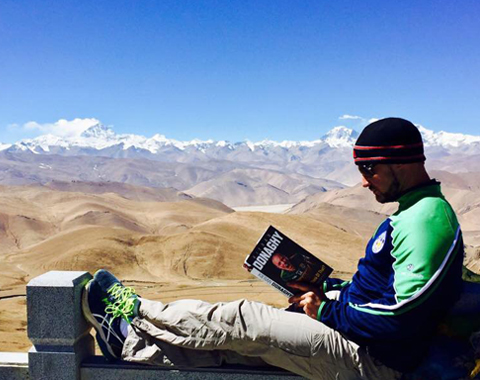
Lhasa - Gyantse - Shigatse - Everest Base Camp - Gyirong - Kathmandu
USD979
View Details -
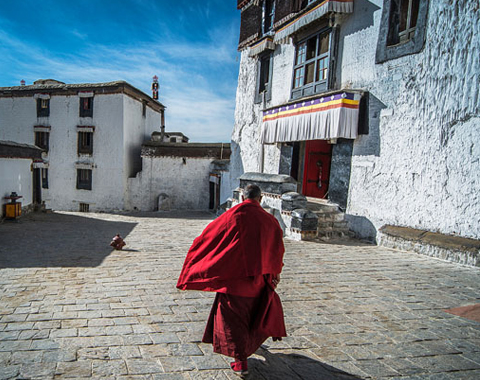
Lhasa - Gyantse - Shigatse- Lhasa
USD799
View Details -
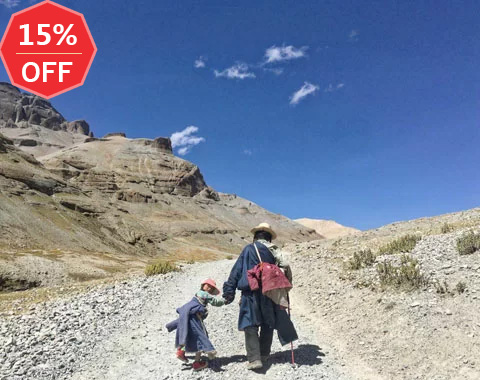
13 Day Lhasa, Mt. Everest, Mt. Kailash, Lake Manasarovar and Kathmandu Adventure Tour
Lhasa - Gyantse - Shigatse - EBC - Saga - Darchen - Kailash Trek - Darchen - Saga - Gyirong - Kathmandu
USD2059
View Details
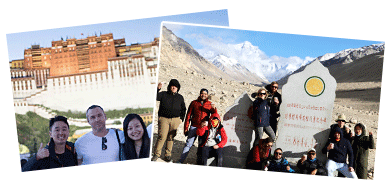
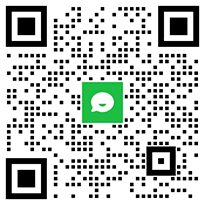
.jpg)




